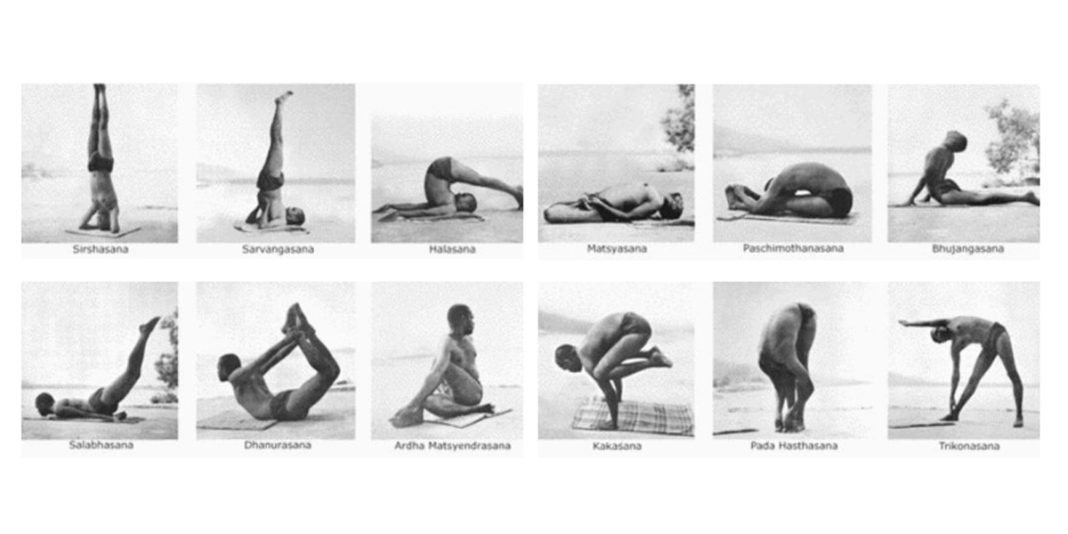Have you wondered why the 12 basic asanas in the Sivananda sequence are practiced in the order they are?
There is a lot of deep and subtle meaning to the order. It represents a cycle and a transformation that we have all, knowingly or unknowingly, undergone. We start upside-down with the headstand and end on our feet in the most stable geometric shape, the triangle.
To understand the sequence, consider in which position we spend most of our waking lives. Generally, we are standing or sitting, with our head at the top. In an evolutionary sense, there is a good reason for this. We can exercise some control over our environment; we can see into the distance and observe an enemy or threat approaching with enough time to do something about it! We have the ability to use our arms to do things and use our legs to move and to go anyplace we wish.
When we stand on our head, we are relinquishing that control over our environment, so we must feel safe to do this! The headstand is therefore deeply introspective, a withdrawal from the world and from our usual ways of interacting with it. We begin the sequence from this detached point of view. As we move through the asanas we are focusing through the chakras, through the levels of consciousness, through the elements, from the most subtle to the most gross. We complete the sequence standing firmly on our feet in a triangle shape, the most stable geometric shape, which suggests stability, being grounded in the world in the usual way in which we inhabit it.
Why would Swami Vishnudevananda emphasize starting with the headstand and finishing by standing firmly on the feet? Always practical, Swamiji likely wanted us to do the deep work, to practice detachment, but to finish the practice with stability, grounded and able to act in the world more peacefully and skilfully. To experience the wisdom of this, you can try an experiment: practice the headstand for 5 to 10 minutes and then to get up and go immediately into the office!
When we practice the asanas in order from the headstand through to the triangle, we are moving through the elements from the subtle to the gross, from consciousness and thought, ether and air through to fire, water, and finally earth. This can be seen as a process of creation, moving from the subtle through to the gross and fully physically manifest.
By contrast, when we complete our practice with final relaxation, we focus through the body from bottom to top, moving through the elements from the gross to the subtle. This can be seen as a process of dissolution. This represents our cycle in life, our transformation from creation and manifestation of our physical body through to death and dissolution of the body and eventual rebirth. We go through a cycle and along the way many changes. This yoga asana practice reminds us of this each day.

